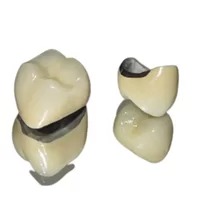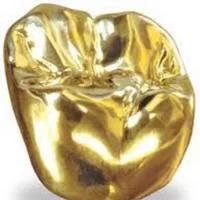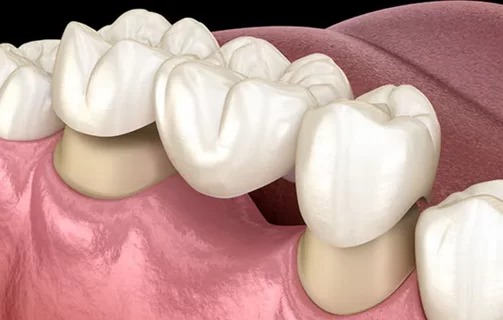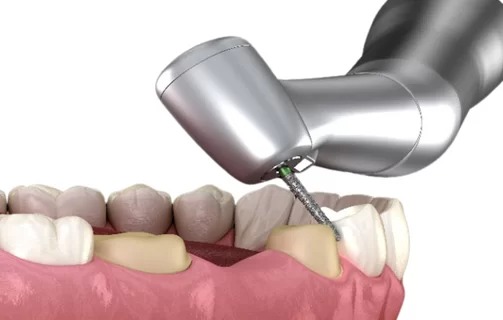Absolutely! Minimal intervention with inlays and onlays is the solution. They are highly conservative, requiring no extra cutting of the tooth, and are metal-free and tooth-colored.


Dental crowns, commonly called tooth caps, are covers for the teeth. A crown, often referred to as a ‘cap,’ is a type of restoration that covers the entire tooth surface. This ensures that the tooth not only functions like a normal tooth but also looks natural and maintains the same relationship with adjacent and opposing teeth. Dental bridges consist of two or more crowns or caps joined together. They are typically used to replace a missing tooth by taking support from neighboring teeth.
Uses of dental crowns and bridges include:

Most commonly used caps. They are not only good functionally but also aesthetically. But beware of cheap substitutes that are used in place of ceramic to lower down the costs.

Pure metal caps are specifically used for the back teeth. They offer similar strength and functionality to ceramic caps, but their metallic appearance can be a drawback for some patients.

They have a core of metal with porcelain on the outer surface.

They are things of the past and are no longer used due to various drawbacks.

Plastic material is mainly used for temporary crowns and bridges.
There are restorations that fall between fillings and crowns for cases where the filling is too large to withstand biting forces. Inlays and onlays are used to preserve tooth structure. They are made of ceramic or metal.


Bone level surrounding the teeth should be optimum for support, and the tooth should not be very loose.
Overloading of teeth should be strictly avoided; otherwise, it will do more harm than benefit. For example, if you have 3 missing back teeth, you cannot just take support from a single tooth and replace all 3. If this is done, due to overloading, you will lose that tooth as well.
If root canal treatment (RCT) has been done, it should be done properly.

Crowns are most often placed after root canal treatment. If, after the root canal, we find that your natural tooth is weak and unable to withstand chewing forces, it may be at risk of breaking. In such cases, we decide to place a crown on the tooth. It’s not necessary to crown every tooth after a root canal, but often people delay visiting the dentist until the tooth is significantly damaged, necessitating both a root canal and a crown. Therefore, the key is to visit the dentist early to potentially avoid both procedures.
Typically, when we eat, the tooth absorbs the force and transmits it to its root and then to the surrounding bone. A healthy tooth performs this function perfectly. However, in a weakened tooth, this force may be unfavourably directed, leading to tooth fracture. When we crown the tooth, the force is favourably transmitted to the tooth root and surrounding bone, preventing fracture and tooth loss.
Absolutely! Minimal intervention with inlays and onlays is the solution. They are highly conservative, requiring no extra cutting of the tooth, and are metal-free and tooth-colored.
Bridges should be avoided in cases where unnecessary cutting of the natural tooth is required.
hile crowns and bridges can last a lifetime, they do sometimes come loose or fall out. The most important step you can take to ensure the longevity of your crown or bridge is to practice good oral hygiene. A bridge can lose its support if the teeth or bone holding it in place are damaged by dental disease. Keep your gums and teeth healthy by brushing with fluoride toothpaste twice a day and flossing daily. Also, see your dentist and hygienist regularly for checkups and professional cleanings.




© 2023 All Rights Reserved - Website Managed by Clinic Eximus